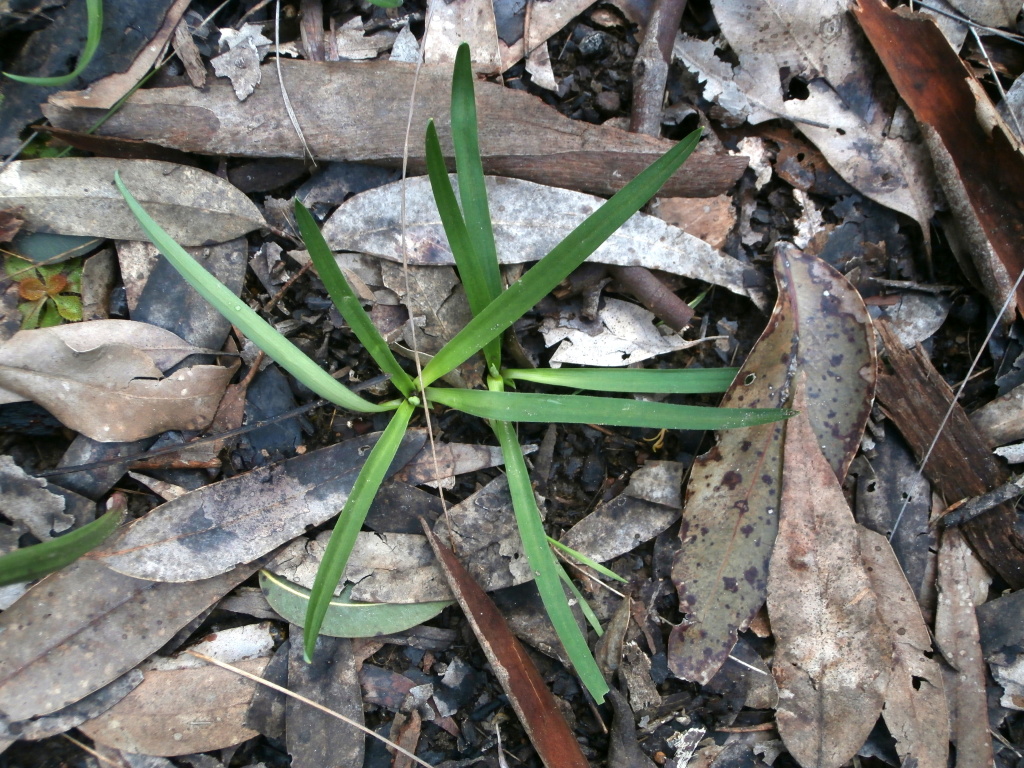Chamaescilla corymbosa var. corymbosa
Blue StarsPlants to c. 25 cm tall. Roots tuberous; tubers elongate, c. 2–3 cm long. Base of plant usually sheathed by fibrous leaf remnants. Leaves usually prostrate, 5–20 cm long, 2–12 mm wide, lower margins often reddish. Inflorescence erect, corymbose, 2–10 (rarely single)-flowered; pedicels subtended by 1 or 2 small, ovate-triangular bracts. Perianth segments spreading, equal, elliptic, 8–10 mm long, bright sky-blue, prominently 3-nerved; stamens shorter than perianth segments. Capsule obcordate, 5–10 mm long, the 3 lobes laterally compressed. Seeds 1.5–2 mm diam. Blue Stars, Mudrurt (Koorie name). Flowers Aug.–Oct.
LoM, MuM, Wim, GleP, VVP, VRiv, GipP, OtP, WaP, Gold, CVU, GGr, DunT, NIS, EGL, EGU, WPro, HSF, HNF, OtR, Strz, VAlp. WA, SA, Tas. Occurs on seasonally damp or wet, sandy or alluvial soils supporting woodland and heath-land; locally common in western Victoria as far north as the Little Desert, but scattered and uncommon from Western Port east to the border (Wilsons Promontory, Lakes Entrance, Mt Raymond).
All eastern-State representatives of the species have been referred to var. corymbosa, but Henderson (1987) indicated that Victorian plants with only 1- or 2-flowered panicles (e.g from the far south-west and Dunolly area) may approach the West Australian var. paradoxa (Endl.) R. Henderson.
Conran, J.G. (1994). Liliaceae. In: Walsh, N.G.; Entwisle, T.J., Flora of Victoria Vol. 2, Ferns and Allied Plants, Conifers and Monocotyledons, pp. 637–686. Inkata Press, Melbourne.
 Spinning
Spinning

